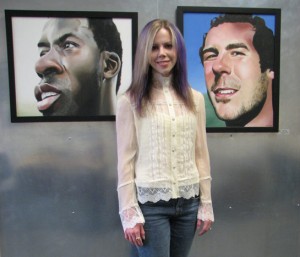As an artist, therefore business owner, I can tell you it takes a lot of work to do what I do. Which is why it is always surprising to me when people are confused by the amount of time I spend marketing my work. Someone once said that it must be “relaxing” and so nice to “just paint all day.” HA! That is clearly not the case. Artists know this but many still struggle with the idea of taking time away from the easel to market their work.
The thing is no one cares about our work as much as we do. It may seem that if you have gained the coveted gallery representation that you are able to just paint all day, but that is not the case. Why else do you see so many artists with representation with various galleries, myself included? I can tell you, and even the gallery owners will tell you, that you can’t put all your eggs in one basket. Galleries are dealing with multiple artists and also multiple tastes and preferences. You are not their only artist and they can’t possibly devote all their time and energy solely into your work.
It is up to you to grow your business, get your work seen, show in different galleries in different cities or even different countries, and meet people. If you want people to know your art even exists, you will have to learn to market it and make the time to do so. If you’re still reading this, clearly you’re serious about your work but I’m sure some of you are groaning at the thought. But hear me out. I have artists from all over email me and ask me how I did this, that, and the other. Some of them assume that I “knew someone” or I was “lucky” but (though I haven’t done any actual math on this) I would say that 99% of what I’ve accomplished is a direct, or sometimes indirect result, of my actions. If you want it done, you need to do it yourself. Call that gallery, email that magazine, write that press release. Whatever you are looking to gain, you will have to take the steps to make that happen. It won’t just fall into your lap. Very rarely does that ever happen.
Make time to work in the studio, but plan to spend a good portion of your day or week marketing as well. Here are some ideas to get you started:
Update your website
Attend gallery openings
Send out a press release
Create a Fan Page for your art on Facebook
Hand out business cards
Send an email newsletter
Give a talk about your art
Read a marketing book!
These are just a few examples. Think big. Whatever you want to accomplish with your art- do it. Make a list and take action.
————
Sign up for my monthly newsletter at: www.amyguidry.com/contact.html
Follow me on Facebook: www.facebook.com/pages/Amy-Guidry/51953219932



